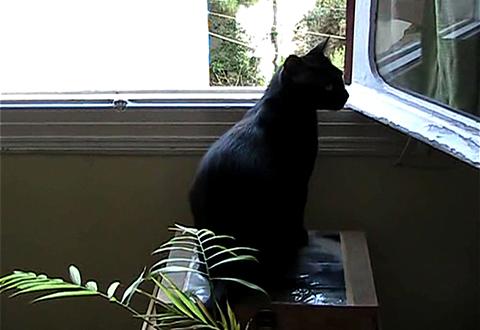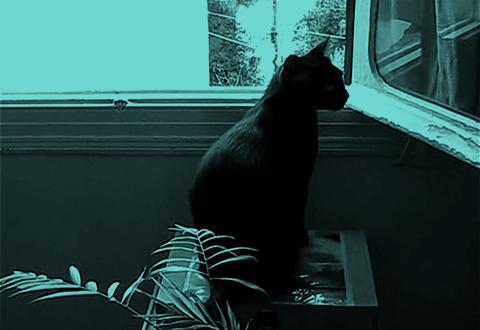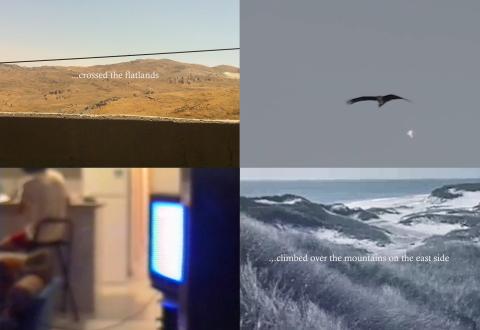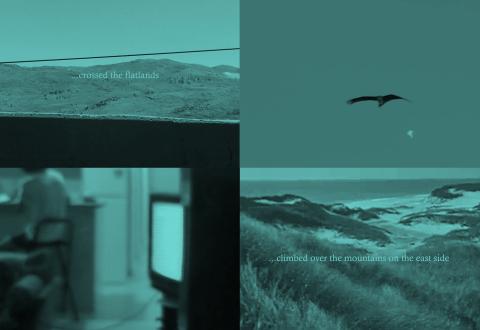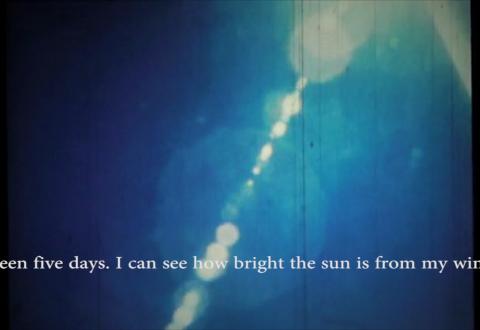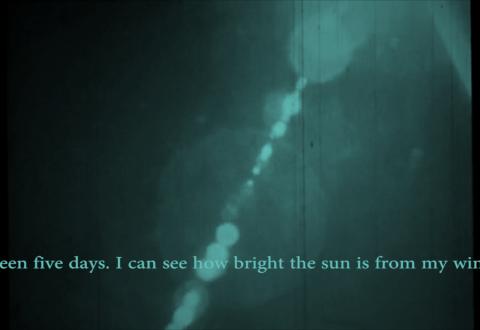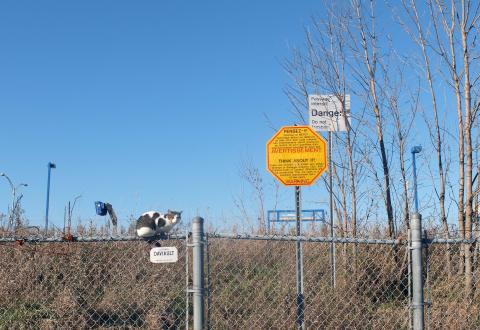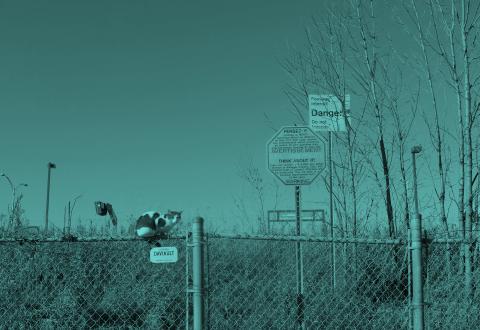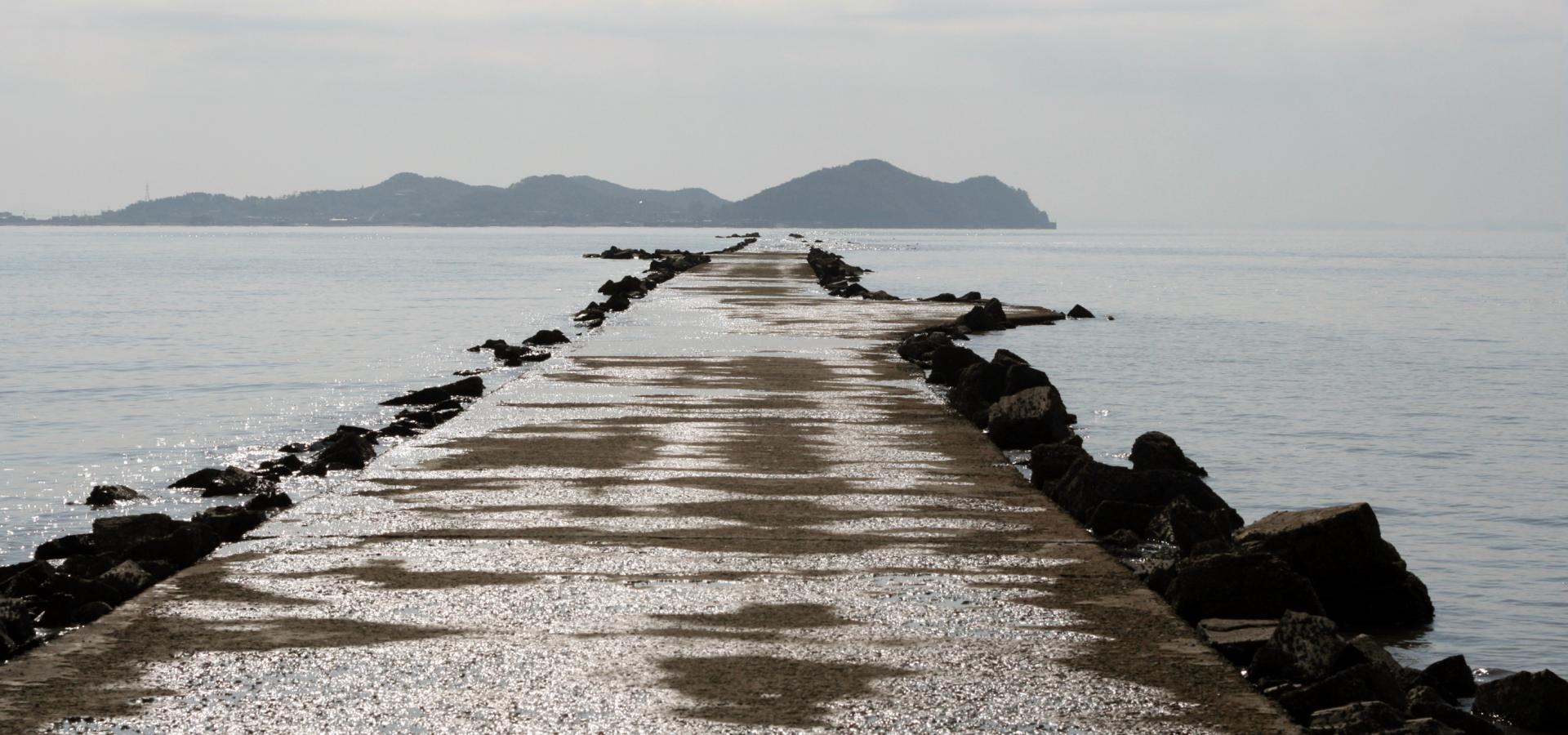
Reconstructions
Reconstructions: Presentation of visual art works
001 – I was born in Beirut, grew up in Cameroon, lived in France, discovered post-war Lebanon in the 1990s, and moved to Quebec in 2011. Travel and migration have been a large part of my life and this has had a strong impact on my artistic practice.
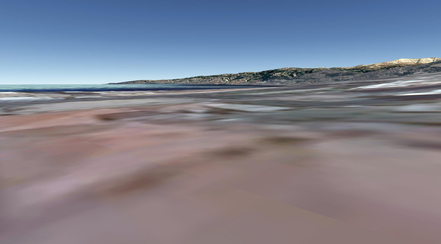
001 – Lebanon
002 – Wearing a place (2014) is a project about a place, or how to represent a place in a personal way. It is also a work that revisits somewhere important to my practice – my old studio in Beirut, the place in which I made my early paintings, and in which I also lived. 003 – For this project, I explored the possibility of translating this space into an article of clothing. The coat’s design was inspired by the floor tiles in my studio. 004 – They date back to 1932, are hand-made, and are quite typical of traditional apartments dating from the early 20th century, as wooden floors would be here. This type of tile is made using pigments mixed with sand and cement. In fact, they look like ceramic tiles though they are actually cement tiles, embedded in the building’s floor. When they cover the surface area of a room, they create the effect of a rug with a border. The ornamental motif of the main tiling references Islamic art (geometric forms, circular patterns and symmetry) 005 – while the border uses rinceau motifs echoing as far back as ancient Rome or Greece (such as flowers and more rounded forms). 006 – I wanted to translate the feeling of comfort and well-being, the warmth, familiarity and harmony that I associated with the space, and so I attempted to transpose it into clothing. What was static became mobile and the motif was deconstructed. A woollen coat protects and insulates, it keeps you warm. In a way, the studio has been reconstructed by translating the tiles that give the space its particular character into another medium—felting (which I did on the floor). This is still a work in progress and it travels with me. I present the coat on the floor.
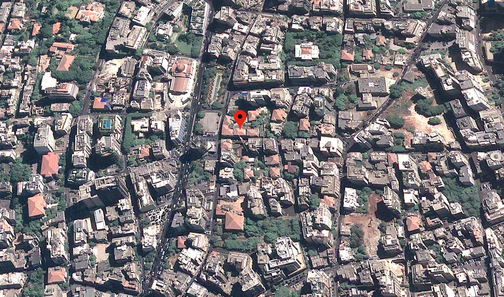
002 – Studio
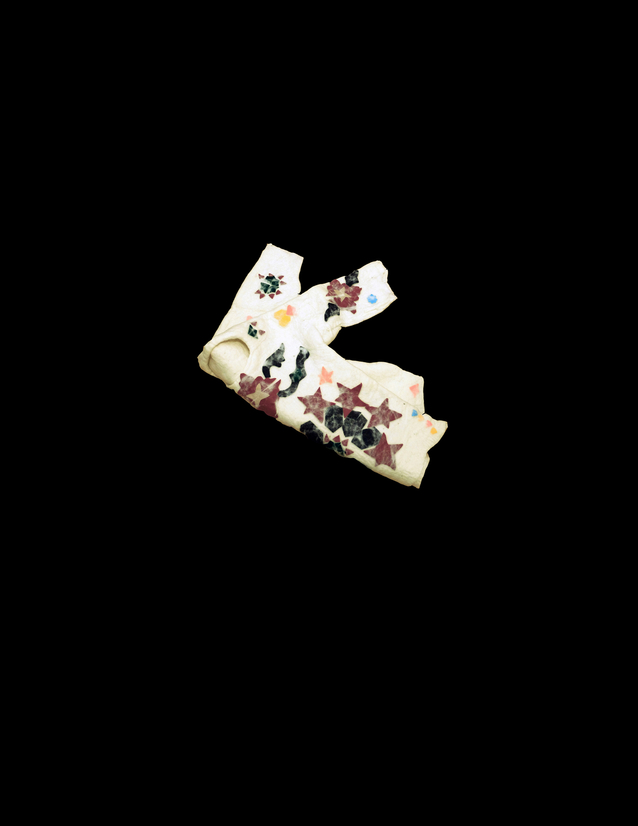
003 – Wearing a place (2014)

004 – Floor tiles, 1932

005 – Border, 1932
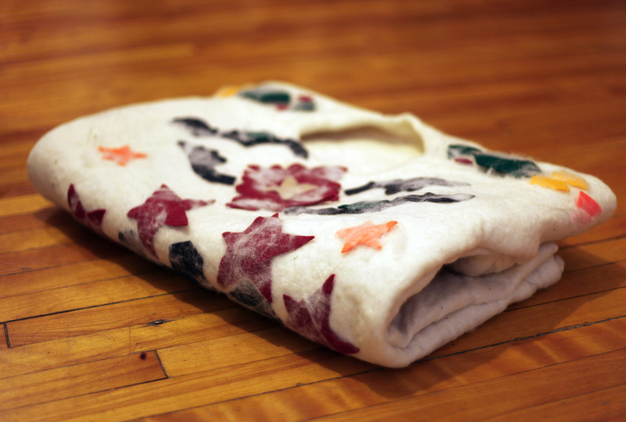
006 – The coat is presented on the floor
007 – In 2006, Ziad Bitar (with whom I collaborate) and I carried out an artist’s residency in Seoul, South Korea, where we made the work Who said that something happened? This project was sparked by our experiences of the war during the summer of this same year in Lebanon; this then became the point of departure for an artistic process rooted in migration: works created around travel or while travelling. South Korea, which I had been to several times, was also a great source of inspiration; two of the four projects that I am presenting tonight were created in this country. 008 – Who said that something happened? is a collection of testimonies about the crisis. To our own were added those of friends, acquaintances and people we met and some were from the press, in both Lebanon and South Korea. 009-010-011 – These testimonies are particular in that they are reconstructions, they have been produced by memory so that, to an extent, they are not entirely reliable and may touch on fiction. This project is above all an exercise in remembering, in the sense that we had to recall or relive our memories with their imperfections, imaginings or black holes. Throughout the process, we never recorded a conversation or took notes. It felt therefore more respectful to us and to others not to identify the testimonies. 012 – Somewhere between a memory and a floating existence, these testimonies have been grouped together in carefully handmade books, each around 14 cm x 9 cm, and each containing different texts. 013-014 – The books were then deliberately and anonymously placed in commercial bookshops in Seoul under different categories (history, sociology, theatre, etc.). Where will the books end up? We haven’t followed up on this, and so have no idea. The books have taken on a new life. 015 – In total, 33 unique books simulate the collective or individual recourse to forgetfulness after a crisis. As if nothing had happened. The installation about this project comprises photographs and documentation of the process in the form of a journal; 2000 copies of this can be freely taken by those who visit the exhibition, 2000 copies that are intended to disappear as well…
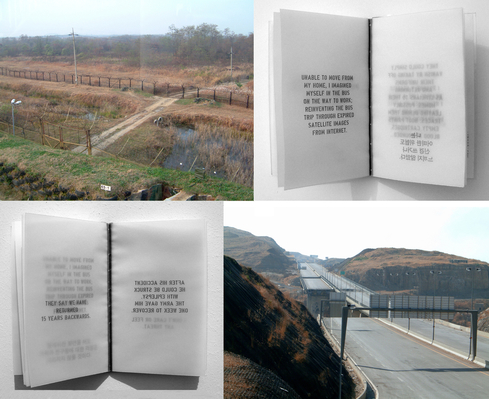
007 – Who said that something happened?
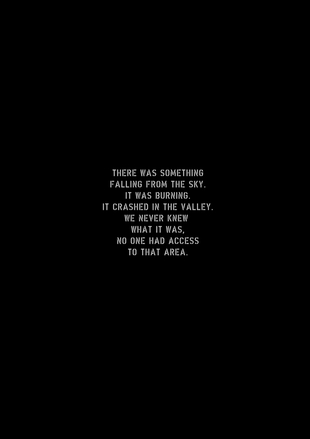
008 – A collection of testimonies
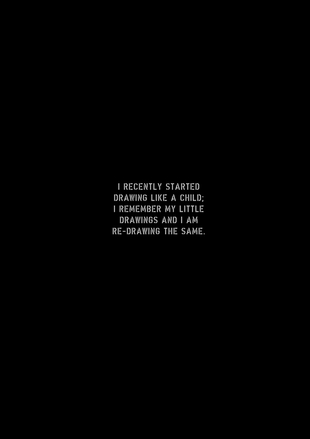
009 – A collection of testimonies
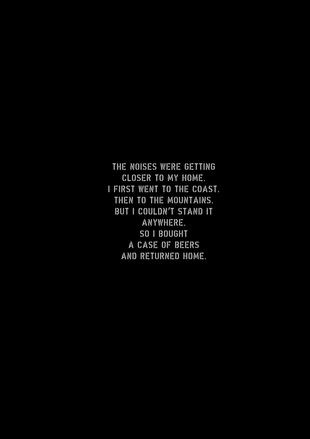
010 – A collection of testimonies
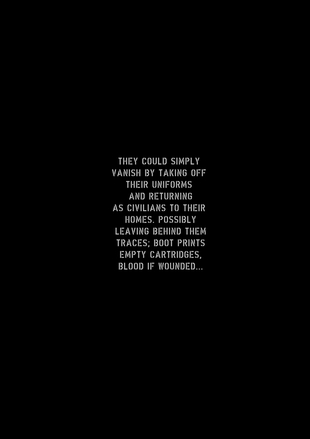
011 – A collection of testimonies
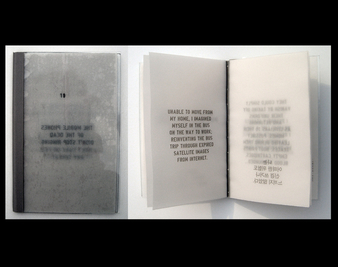
012 – Handmade books
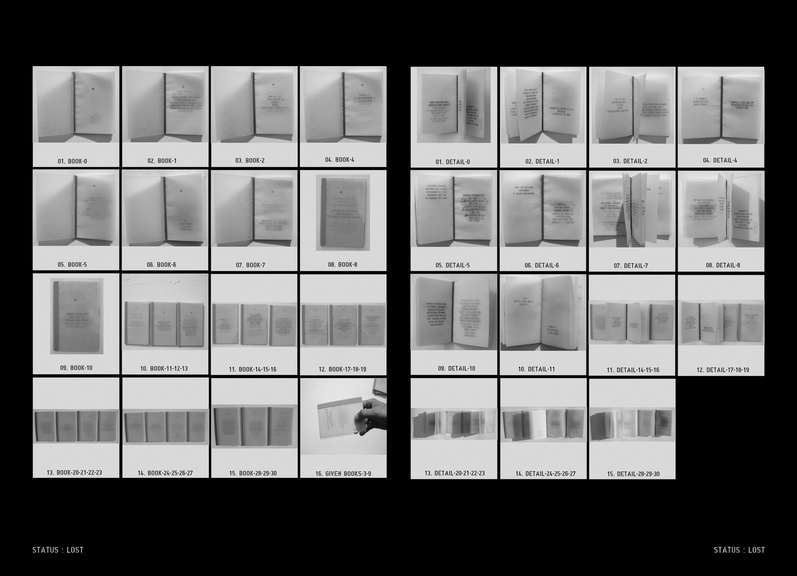
013 – 33 unique books
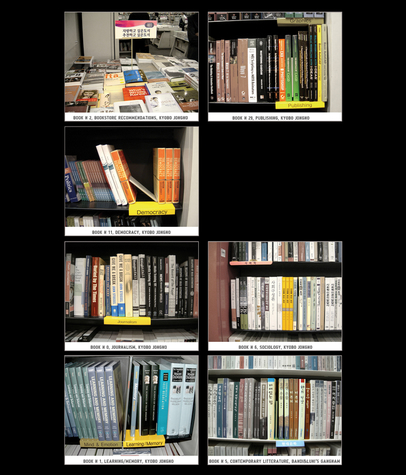
014 – The books were placed in commercial bookshops in Seoul
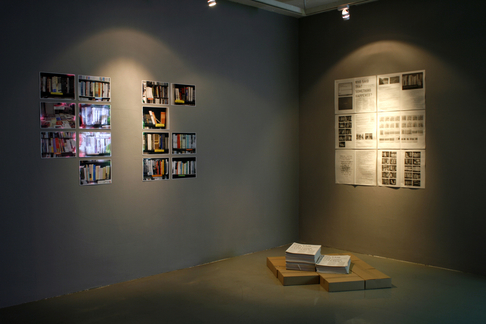
015 – The installation
016 – A road into to the sea (2010) is a series of photographs taken during an artist’s residency in Daebudo, South Korea, in a relatively isolated village on the Yellow Sea. 017 – The landscape in this region is somewhat lunar, the mudflats found by the sea are a rich ecosystem that can only be seen twice a day, during periods of low tide. 017/2 – This intertidal zone, between two coasts, has something ephemeral or unreal about it that is quite typical of the west Korean coastline. 018 – At low tide, the site that I chose for this project is a concrete road approximately 2.8 km long, which ends at a quay. At high tide, this road, which is mainly used by men and women who fish for crabs and gather shellfish, disappears entirely under the sea. 019-020-021-021/2 – I decided to cycle the full length of the road at low tide one afternoon, travelling quickly so as to return in less than an hour, before high tide. I only documented my outward journey, being too pressed for time to document my return, and I decided to film it on video so that I could then use the images as photographs. 022 – This work was made spontaneously, but I consider it to be very important because it touches on the experience of a place and it links different themes that fascinate me: time, space, landscape, movement, and the notion of interstice. 021/2 – This project, or this experiment, which was about living the moment and then reconstructing it, becomes a sort of psychological journey, a reflection on dual movement, that of the body and of space, in a place which also disappears and then reappears and transforms… there is a sort of awareness of the passage of time that exists between two moments, between the tides, or an attempt to keep hold of something, to capture it.
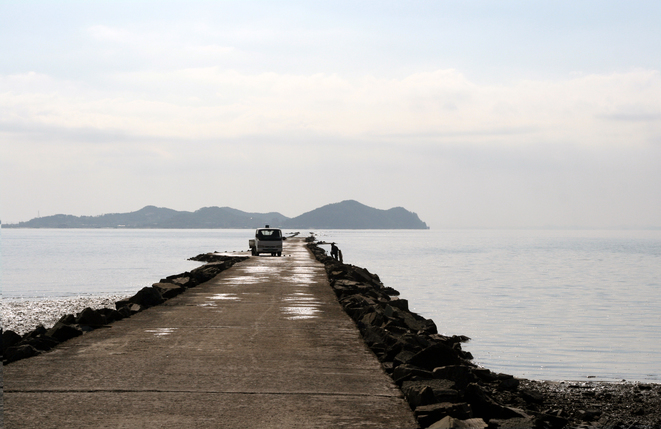
016 – A road into to the sea (2010)

017 – The landscape
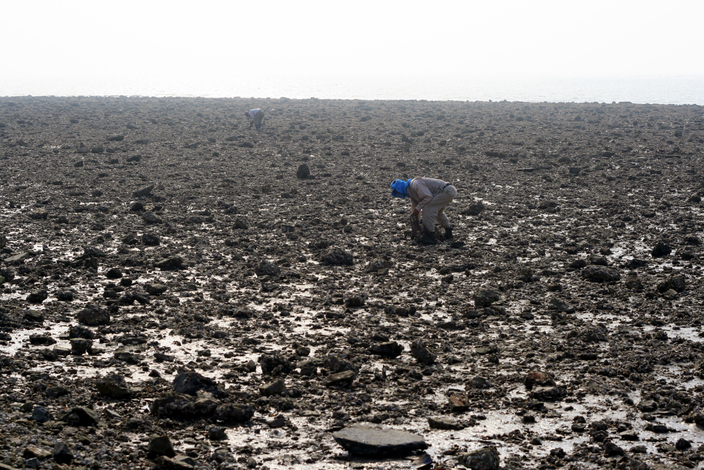
017/2 – This intertidal zone
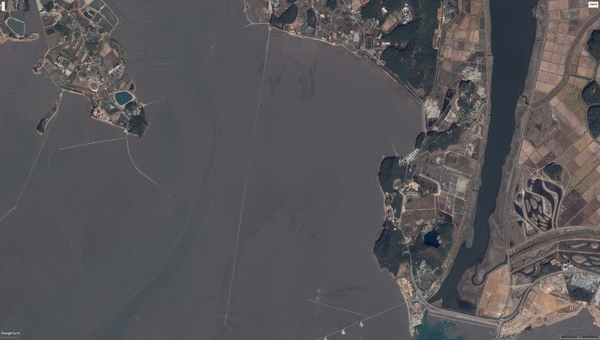
018 – The site of the project
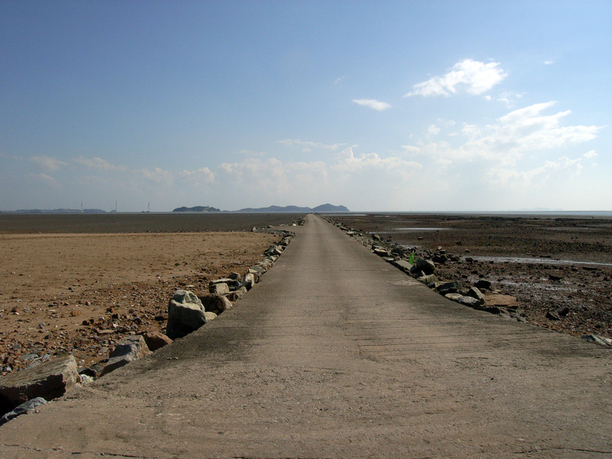
019 – The road

020 – The tide

021 – The tide
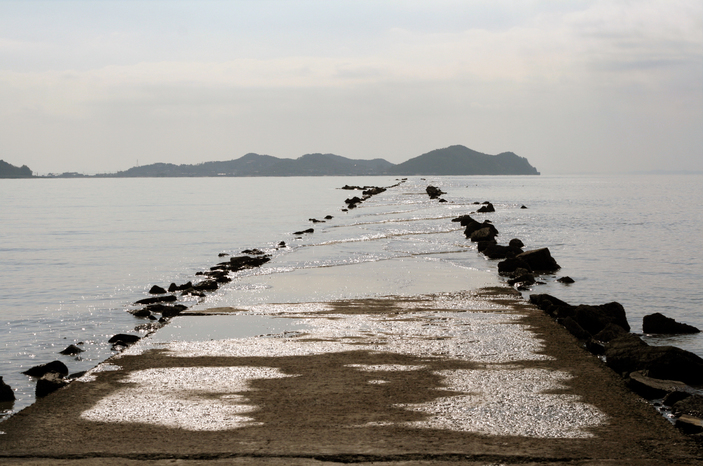
021/2 – The tide

022 – The work
023 – Gratter le ciel par la racine (2017) is concerned with urban wandering as an aesthetic and artistic practice. The work comprises recordings made while following a pre-determined route. It represents a story of travel—a translation of our subjective and diverse experiences of the area covered, in which the real is mixed with the imaginary, as the act of wandering, while physical, is also mental. 024 – Realized in collaboration with Ziad, the work derives from a discussion that we had on a mountain, and what it meant to us to find ourselves at the summit. 025 – For this project, we chose two places with panoramic views: the new observatory at Place Ville-Marie and Mount St. Hilaire. These two places create two points that form an imaginary line. As we climbed to the summits and later travelled the distances between them, on foot and using public transport, we took photographs and shot short videos, trying to understand the space we were covering. The final work comprises a text, two videos and two paintings.
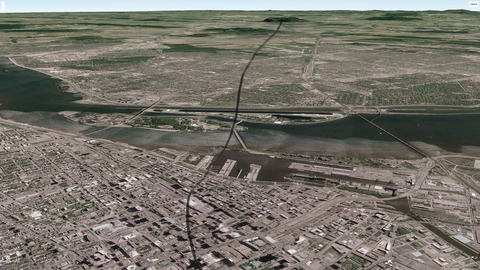
023 – Gratter le ciel par la racine (2017)
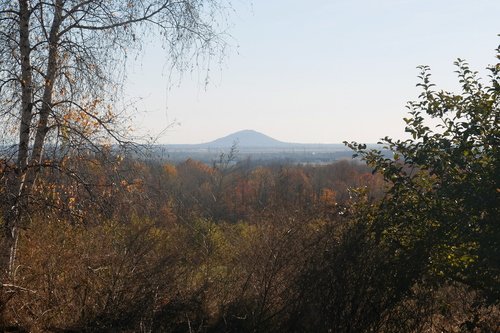
024 – Mount St. Hilaire
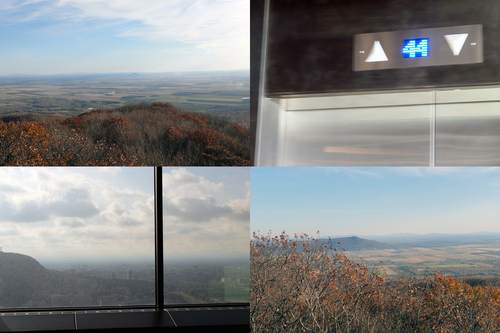
025 – Views from the observatory and Mount.St-Hilaire
026 – In the video Tours, a person follows the walls around the top of a 44-storey building. Instead of showing what is on the 44th floor, the camera shows only the building’s floor and the person’s steps in real time. This is accompanied by the sound of passing trains, running water and footsteps on the concrete. Intended to be shown on a loop, the video is constructed as a circular path within a rectangular structure. Written as an anecdote and signed by the pseudonym ‘S’, the story describes the different ideas that led to the journey to Mount St-Hilaire. 027 – The painting Repères, 165 cm x 60 cm, depicts a panoramic landscape. 028 – Based on 18 photographs, this work reconstructs the highlights of the route while referring to the story. 029 – Despite its direct references to the area covered, this subjective cartography offers an imaginary vision of a journey through a diverse geography. 030 - 031 – If the first painting refers to movement, the second one, 120 cm x 80 cm, entitled le point zéro, depicts a geodetic point, fixed and immobile. This serves as a reference and orientation point to calculate, through an optical method known as triangulation, the heights and distances between summits. Often, these types of points are topped by a precise and visible element. In our case, it is a pyramid, which we have painted. We came across it at the top of the Jura mountains in Europe during a trip in September 2016. This point symbolizes a space of contemplation and reflection where the entire work seems to begin and end. 032 – Finally, the video Km.0 is a ballad in which the real and the virtual meet.

026 – Tours

027 – Repères
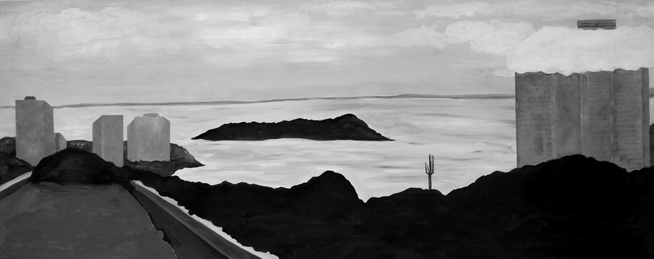
028 – Repères, détails
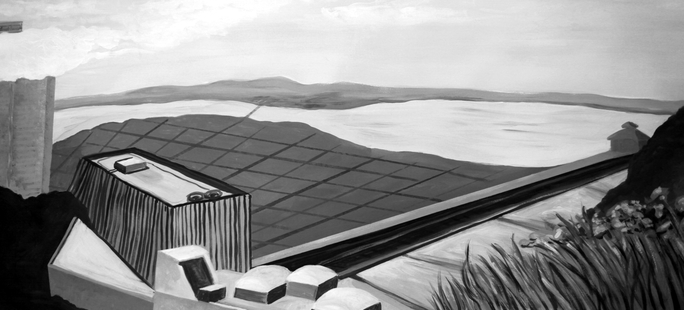
029 - Repères, détails
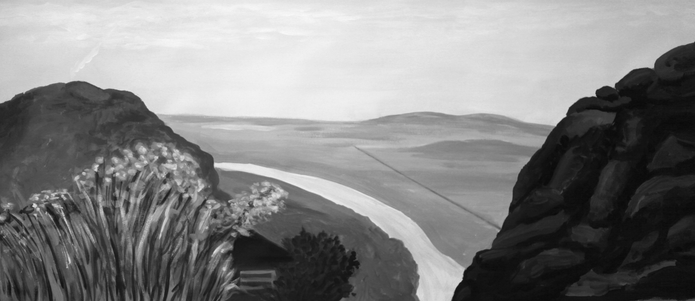
030 – Repères, détails
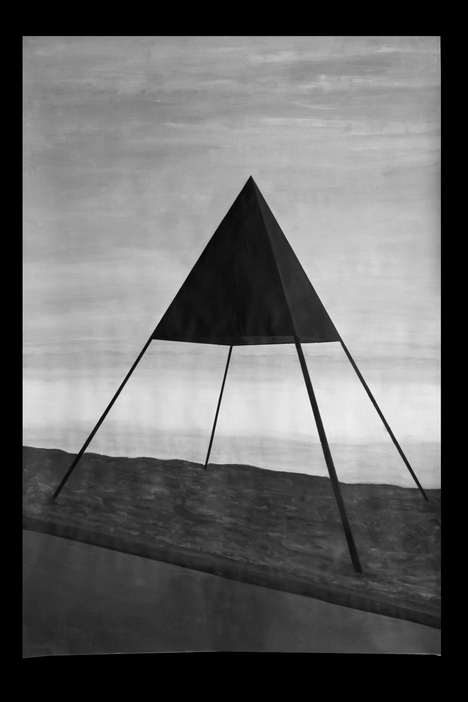
031 - le point zéro

032 – Km.0
This text was read as part as the event Carte blanche to Nayla Dabaji, presented by Vidéographe and Dazibao, November 15, 2017.
Image: Nayla Dabaji, A road into the sea, 2010

